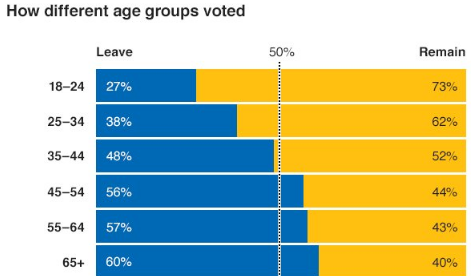 We live in a world of ever-growing concern about environmental harm to our health and well-being. As the science of detection improves, so does our awareness of large-scale releases of contaminants into the air, water and soil, which can affect large numbers of people and their property.
We live in a world of ever-growing concern about environmental harm to our health and well-being. As the science of detection improves, so does our awareness of large-scale releases of contaminants into the air, water and soil, which can affect large numbers of people and their property.
For example, high concentrations of lead were found in Flint, Michigan, and shortly thereafter in drinking water systems in New Jersey and New York. Large volumes of natural gas were released into the soils below the homes of residents in a southern California subdivision, which volatized into the air, and remained uncapped for months. A spate of PFOA-contaminated groundwater issues have arisen throughout the Northeastern states; and, of course, we are all familiar with the widespread injuries and property damage caused by hurricanes Sandy and Katrina to tens of thousands of people living in their paths.
In each of these cases, a single event or series of related events caused harm to large numbers of people. Generally, the types of harm suffered-either to persons or to property-are similar in character, but can differ enormously by degree among the affected population. While our judicial systems were neither designed nor are they equipped to handle cases involving thousands of litigants similarly affected-but in vastly differing measures-these matters provide a perfect opportunity to use ADR skills to resolve them intelligently and effectively.
A Solution to a Complex Web of Issues
Mediation and other ADR processes have repeatedly been enormously effective in resolving mass toxic-tort and environmental claims. ADR provides a way to condense many years of expensive court procedures into a precise, cost-effective and efficient process that provides fair and individualized compensation to thousands of people that were affected by an accidental release or other tragic event.
In addition, mediation provides the opportunity to weave together and settle at one time many interrelated disputes that may arise from a single event or contaminated area. For example, one cluster of environmental conflicts may involve civil suits among the private parties seeking an allocation of fault and payment for the cleanup, personal injury and property damage claims arising from the same contamination, regulatory enforcement or penalty actions brought by environmental agencies and attorneys general, and lawsuits between individual parties and insurance companies that issued multiple pollution policies over the years. The outcome of each of these cases may affect the ability of the parties to resolve the other cases. But no one court or administrative body ordinarily exercises jurisdiction over all of them. Mediation, however, provides a single forum where all these cases can be resolved in a coordinated way. It may be achieved through separate agreements but the effect is the same-all moving pieces are brought to rest at a meeting point at the mediator’s conference table. It’s the point where a settlement can be reached that comes closest to meeting the collective best interests of all parties.
Here, I will focus on class actions and mass tort claims. The ADR processes I discuss below are equally applicable and effective in cases in which the contaminant was transported by surface or groundwater or through the air and soils.
How a Mass Action ADR Process Can Benefit All Parties
A useful example involved an accidental release at a petroleum refinery. The release lasted 16 days until corrected, causing a toxic substance used in the refinery to be discharged and dispersed across an area covering several neighboring towns. Ultimately, more than 11,000 people who lived or worked in the impacted area sought relief.
A comprehensive settlement fund was created through mediation for distribution to affected persons and bargained-for releases were delivered to the defendants in return. Through continued mediation the parties designed a process to fairly and efficiently distribute that fund among different “categories” of claimants exhibiting different degrees of exposure and symptoms of injury. The ADR process was specifically designed to determine: (1) who would be eligible to participate in the settlement; (2) how much each person would receive in compensation or other relief; and (3) to elicit the specific criteria necessary to make these determinations.
The process involved three tracks for the distribution of the funds: (1) automatic payments based on a claimant’s physical proximity to the point of release; (2) expedited, informal hearings for those claimants whose claims were significant enough to warrant in-person meetings; and (3) individual briefing, but not hearings, for “middle level” claims (those that fell between the serious injuries and automatic claims). Progressively higher levels of proof of exposure and injury were required to establish eligibility for and compensation from the various payment categories.
To identify the zone of qualifying impact and the differing contaminant concentration levels within the boundaries of the plume, the parties and their experts used testing data points, which showed the path the contaminants traveled during the period of release, to draw concentric exposure contours of the areas affected. These exposure contours were visually superimposed on a map of the impacted area to provide a blueprint of all claimants’ location and probable exposure levels.
This tiered approach was a success for a variety of reasons. First, claimants were part of the process; they were able to self-select (with assistance of counsel) into the damages category that they believed best fit their own situation. Second, because many claimants were not seriously injured, a small percentage of the fund was used to compensate an extremely large segment of the population, leaving most of the fund available for those with provable injuries. Third, because the allocation process was transparent, claimants overwhelmingly viewed the process as fair and just, which avoided multiple-representation conflict-of-interest issues and complaints that mass-tort settlements frequently generate.
Finally, funds were dispensed to claimants both quickly and cost effectively. Funds that were designated for distribution to the effected population were not drained by excessive fees and transaction costs. Importantly, more than 95 percent of the funds were awarded and disbursed to the claimants within three to 12 months after the process began, and fairly compensated the full spectrum of injured claimants.
In situations like Flint, where the injuries are more nuanced, software programs have been designed to provide a more thorough assessment of physical injuries and other compensable harms. Participants are required to substantiate their claims with medical records evidencing the alleged harm. A secure electronic platform can be established, into which claimants or their attorneys can upload copies of required medical records. While nearly all medical records are submitted electronically, programs must still make allowances for individuals who rely solely on paper files.
The administrator is responsible for cataloging the medical records submitted by each claimant and assessing whether the required files are present. Next, the administrator will evaluate the evidence to determine whether the claimant suffered an injury that qualifies him for benefits. In doing so, the administrator will extract relevant facts from the medical records and document those findings in the program’s database. These could include medical diagnoses, surgical information, medications taken, or any other element that is significant to the specific program.
To ensure accurate outcomes and consistent treatment of all participants, a responsible administrator will develop a computerized algorithm to analyze the information taken from each claimant’s medical records, determine whether the individual is eligible for an award, and calculate the amount to be paid. While this approach requires substantial effort in the development and testing of programming code, by automating this calculation the administrator ensures the highest possible level of efficiency and accuracy in the assessment of claims.
Clarity, Transparency and Consistency
Much effort goes into the planning and implementation of these processes. All participants must understand what the process is designed to achieve and what is expected of them. This is critical for the claimants themselves to have confidence in its fairness. Clarity and transparency engenders trust that each claim will be decided fairly, on its own merit, under the governing decisional standards. This is achieved through clear and user-friendly materials (hard copy and electronic), including descriptions of the process; forms for the submission and review of data in support of each claim; eligibility criteria; approved decisional formats; and expected time frames for receipt, review, decision and payment.
There must also be consistency in decision-making. Like claims must be decided alike. Claims decided on day one must be handled in the same manner as those decided on the last day.
When individual adjudicators are used, the quality of their decisions must be closely monitored to ensure compliance with the written standards. Information regarding each adjudicator can be gathered through statistical analysis and review of sample decisions. In addition, each adjudicator must commit to the professional and productivity standards required of the project.
These can be huge undertakings, with significant repercussions for all parties. There are many decisional formats that post-settlement proceedings can take-and should correspond directly to the aims of the settlement. Some process variables to consider are: should the fund be a fixed amount or a claims-made; will the relief be predetermined or discretionary; will decisions be based on written or oral presentations; will the ADR process be adversarial; what elements of proof will be required and how will the claim form track the necessary data points; who will be the decision-makers, lawyers, judges, medical or environmental professionals, etc.; should there be an “appellate” process to correct particular awards; should the court retain jurisdiction over the settlement; and will there be a special master to oversee the process.
These are but a few of virtually limitless variations on a similar theme. Just as no two environmental hazards are identical, so too each approach to mediation represents a distinct way to intelligently resolve a large-scale environmental or mass toxic-tort incident, driven by the unique facts and circumstances of the case and the specific needs of the parties. Created and implemented with care, they provide a superior alternative to traditional court-based procedures.
This article originally appeared in the New Jersey Law journal written by Lester Levy.






Leave a Reply